Impact of COVID-19 on Chinese Silk Industry and Consumer Market Trends
In order to judge the future trends of the silk industry and consumption, International Silk Union(ISU) launched the research of Impact of COVID-19 on World Silk Industry and Consumer Market Trends, and publish the report of “Impact of COVID-19 on World Silk Industry and Consumer Market Trends”, “The Impact of COVID-19 on the Italian Silk Industry”.
Due to the early outbreak of the epidemic in China and effective control, Chinese silk enterprises have resumed production. However, the international epidemic situation continues to spread, economic activities are blocked, and the survival and development situation of enterprises is in trouble. Concerning the impact of COVID-19 on Chinese silk industry and consumer market, national and local government policy support for silk companies, and Chinese companies’ order decrease, delay and cancellation caused by global COVID-19, etc. ISU secretariat conducted a further investigation on the enterprises’ resumption and measures taken in response to the global COVID-19. The situation is as follows:
Impact of COVID-19 on the World Silk Industry
Q: What changes do you think the COVID-19 will bring to the world silk industry and consumer market? What companies should do to resume production and increase sales? What governments and industry associations should do to strengthen the safeguards and provide support? What measures the companies should strengthen to response the epidemic?
Yu Yuenan
President of silk professional committee and vice president of China Textile Commerce Association
Silk domestic trade enterprise losses are relatively good, during the epidemic, it was the off-season of silk sales. The main losses came from rents and employee salaries. The loss of above-scale domestic trade enterprises is expected to be 200 million yuan. In the future, the main challenge faced by domestic trade enterprises is that overall consumption will be suppressed, which will affect the sales of silk. The annual sales are expected to fall by more than 10%. Silk is a luxury item in textile products, not a necessity of daily life. The overall consumption shrinkage will affect silk consumption. The scale of silk domestic trade enterprises is relatively small. Most traditional enterprises have relatively low capital leverage ratio and strong anti-risk ability. It is expected that the epidemic will not lead to a large-scale closure of silk domestic trade companies.
With the large-scale outbreak of international epidemic, Chinese staff turnover resumed fully delayed, which has affected the restoration of consumption. The losses of silk enterprises in domestic trade production and sales are expanding. Shrinking the enterprises expansion and opening up online sales will become an important strategy for silk domestic trade enterprises this year to reduce losses and overcome difficulties.
Wang Xiaohui
President of Chongqing Cocoon and Silk Industry Association
President of Chongqing Wintus New Star Enterprises Group
If the government's policies for enterprises cannot be implemented, then the role of the government is minimal. Faced with the market, the enterprise should help by themselves. Enterprises should strengthen product category docking, multi-party communication, and develop innovative cascading prices products and customer groups that are suitable for multiple regions, multiple levels, multiple attributes. In view of the medical products market that is now peaking, we believe that: first, it is minority; second, it is no price; third, it is no consumption value; last, it has the time and space restrictions. so, It is impossible to form a new round of peak of silk consumption. In response to the current changing epidemic in the world, what enterprises should do is to survive effectively, reduce investment expansion, or even not invest. Only in this way can we have next year and future. After losing this year, we can’t take it in next year. It ’s better to be painful sobriety than to be emotional and Image.
Zheng Jinhuan
President of Journal of Silk, Zhejiang Sci-Tech University
At present, the COVID-19 is under initial control in China, but the overseas epidemic situation continues to spread. The silk industry has suffered a sharp decline in foreign trade exports on the basis of the early impact of domestic shutdowns and production. The industry development is facing huge challenges.
1. Silk companies need to actively resume production, analyze and find new consumer demand, adjust product structure, and focus on tapping and nurturing domestic market demand. As the domestic epidemic subsides, the consumption of Chinese residents will gradually become active, and even rebound consumption may occur. Enterprises should pay close attention to the domestic market and the multi-level consumer demand of domestic residents;
2. Pay more attention to scientific and technological innovation, focusing on the bottleneck problems in the design and research of new technology, new technology, new products, and transformation and upgrading, including the development of silk protection products and multi-functional silk fabrics in response to the epidemic and other infectious diseases, Industry, academia and research cooperate closely to further speed up the development of new technologies and the speed of marketization, improve internal skills, improve the competitiveness of silk products, and prepare for the recovery of the international market in the future;
3. Vigorously cultivate and strengthen online marketing. In the future, online consumption will be the main choice for young consumers. How to make the comprehensive and multi-level scenario between silk products and consumers to reach a more efficient marketing model is worth paying attention to;
4. It is hoped that the government will introduce relevant measures to further increase financial support for the silk industry on the basis of implementing measures such as national tax support and financing convenience to help the silk industry to successfully pass this special difficult period. In addition, it is also hoped that industry associations, related universities, research institutes, and industry periodicals will provide silk enterprises with more timely information, technical services, and technological support.
Zhong Bingzhang
Curator of Chengdu Shu Brocade Embroidery Museum
Executive director of Chengdu Shujiang Jinyuan Embroidery Co., Ltd.
The company's non-legacy industry (Sichuan brocade weaving skills) is a traditional industry, similar to Nanjing brocade, Song brocade, Zhuang brocade and so on. One of its important duties is the inheritance and protection of skills. In terms of product attributes, it can be included in both non-legacy and handicrafts, most of them cannot be mass-produced, such as hand-brocade, hand-embroidered, etc., so the scale and production capacity are small. Most small and micro enterprises are the workshop-style production in front of shop and factory behind, low innovation ability and traditional sales model are the current status of the industry.
COVID-19 will have a huge impact on the Chinese economy, especially the Chinese consumer market will be severely blocked in the short term. People will focus on rigid demand for a long period of time, and high-end consumption represented by silk and brocade will shrink sharply, especially in terms of exports.
Enterprises have to change their sales model. Firstly, reconstruction of consumer relations under the internet environment. The premise of this reconstruction is to have a brand, a certain production scale and a more stringent product quality control system. Secondly, product sales and innovation model changes. Utilizing the cultural endorsement of the long history of traditional products, cross-industry cooperation, expand the brand awareness under the premise of gaining benefits, achieve a win-win situation. Thirdly, expand the scope of product services. Carry out online standardized customization + offline personalized customization business, and dig deeper into subdivided demand markets.
It is hoped that the government will increase its efforts in the protection and inheritance of non-heritage culture and give preference to policies and funds.
Chen Zhangren
Hangzhou Fuqiang Silk Co., Ltd.
The COVID-19 is force majeure, and its impact on SMEs business is inevitable. The sudden outbreak brought operational difficulties to the silk industry, including reduced orders, increased costs, a shortage of funds, reduced sales, reduced customer communication, and failure to properly function product development, and the company’s losses in the first half of the year will increase. Facing difficulties, enterprises need to establish sufficient confidence, firmly believe that there are always more ways than difficulties, take the initiative to adjust product structure, actively expand the market, continue to develop new varieties, and do everything possible to communicate with customers, strive for more orders. It is necessary to continuously strengthen management, especially to stabilize the workforce, enhance corporate cohesion, and jointly overcome difficulties.
Zhang Zuqin
Executive vice president and secretary-general of Hangzhou Silk Industry Association
The epidemic will make the industry or enterprises to think. Some parts of Hangzhou rely on silk brands or businesses that rely more on urban tourism. This epidemic has the most serious impact. We can use short videos and live broadcasts to transform the consumer market. Production enterprises will closely follow the changes in the situation this time and bear social responsibilities. While ensuring the supply of epidemic prevention materials, there are also new ideas for the development of new functional products.
The policy response and landing speed of Hangzhou municipal government is very fast, the association actively cooperates to make a good bridge and play a role in up and down. Although offline activities cannot be carried out in the near future, information services and corporate resumption support can be provided online. At the same time, do a good job of screening and try not to burden the enterprise.
Li Jinzhou
Director of chartered media of CCTV
1. Companies that value brands will get new opportunities, forcing companies to value various media communication combinations. The market segment with accurate personalized positioning will get great development.
2. The first task of companies in restoring production is to ensure safety, while doing good quality, we must also pay attention to publicity and brand communication. In addition to traditional offline sales methods, increase online sales channels is needed. Channels alone are not enough. Now the silk industry is also a buyer’s market. The wine is also afraid of deep alleys, and it needs to propaganda if it is good. Relying on authoritative media to show the excellent quality of the company may be a shortcut.
3. The government can help at the level of taxes, financial, talents, and product promotion. The association can open up some online communication opportunities. After the epidemic, it can do some domestic and international exchange activities.
4. For large enterprises, it is the best time to expand the upstream and downstream industrial chains. For SMEs:1) Open up new paths, ensure quality, focus on publicity, and find a way out; 2) If there is no core competitiveness, then look for industry peers to hug and warm up. Regardless of the size of the enterprise, according to their actual situation, pay attention to the corresponding matching publicity methods to make the enterprise even more powerful. For example, large enterprises can use CCTV's authoritative columns for a comprehensive interpretation, but of course they also need to meet the broadcast standards. Small businesses can use self-media.
More experts' review
Q: What is your identity
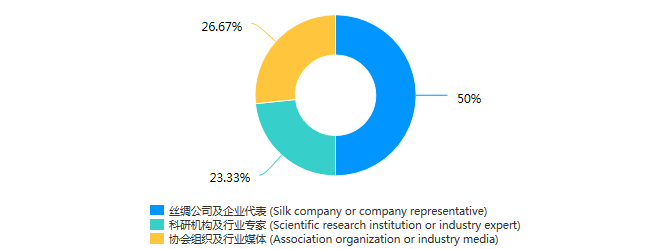
Q: In response to the COVID-19, what support has your country and city provided for silk enterprises

Q: In response to the COVID-19, what measures do you think are the top priorities for silk enterprises
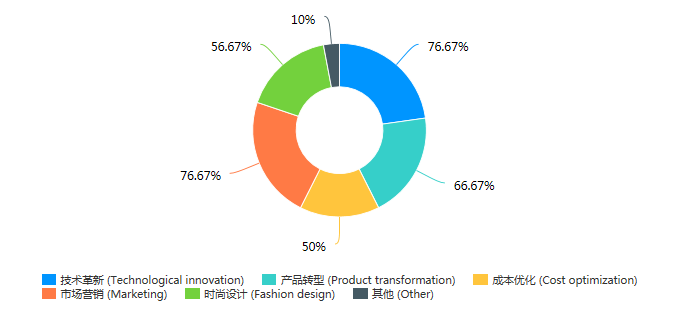
Q: In the future development of the silk industry, which of the following new technologies should actively absorb and adopt
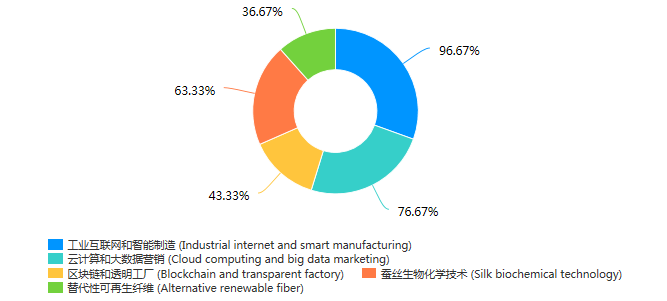
Basic information of the enterprise or unit
Q: Business scope
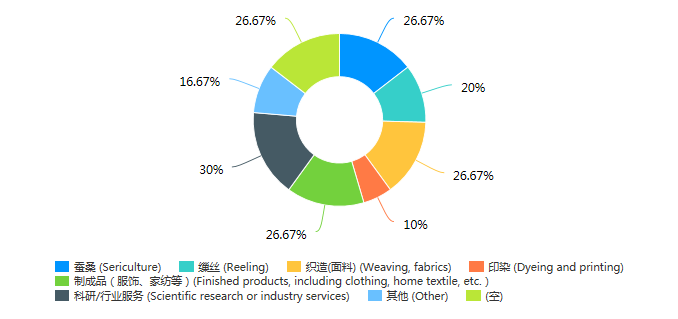
"空" in the diagram means that some scientific research institutions, industry associations and units are not involved in production and trade, and have not answered this question. It also has the same meaning in the following diagram.
Q: Enterprise scale
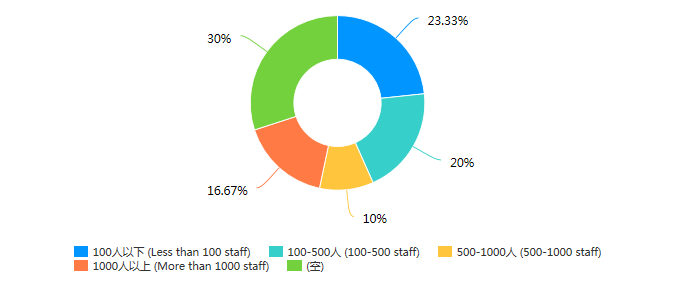
Q: Annual operating income in 2019 (USD)
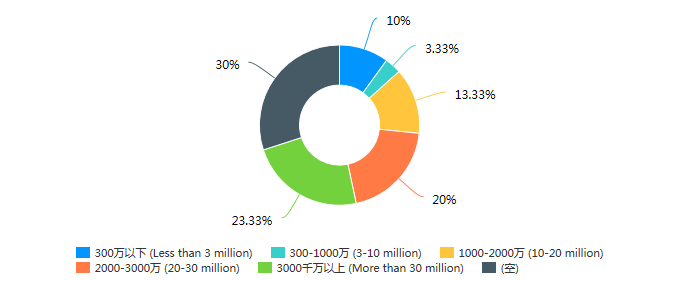
Q: Enterprise' main distribution model
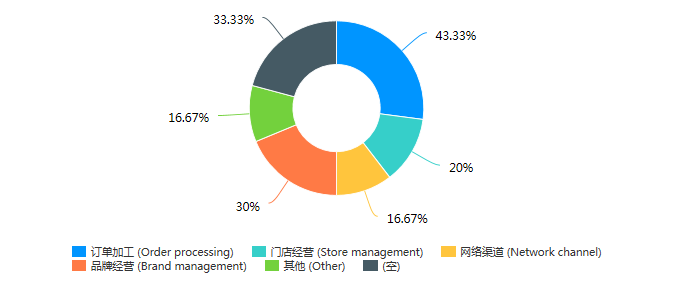
Impact of COVID-19 on enterprises
Q: Up to now, the situation of business start-up
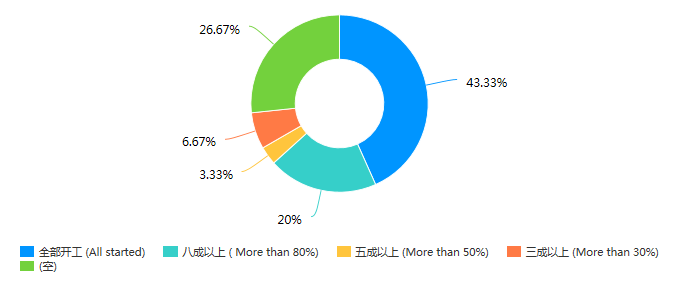
Q: Enterprise orders source or the major services regions
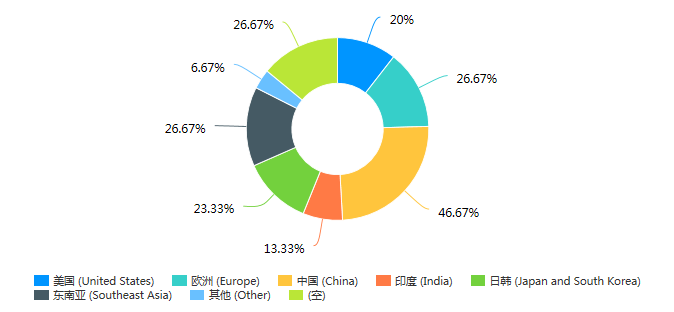
Q: Enterprise’s expected lose to lose production or operations in 2020 because of COVID-19
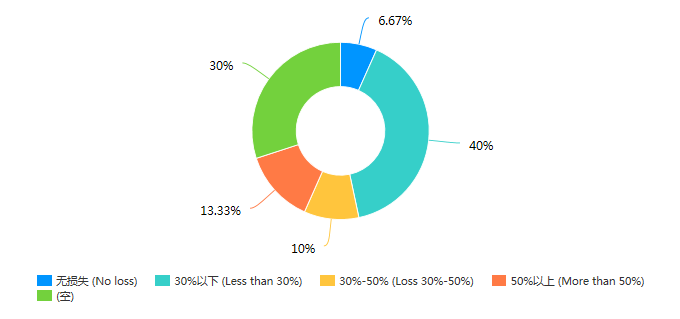
Q: Enterprise's current major difficulties
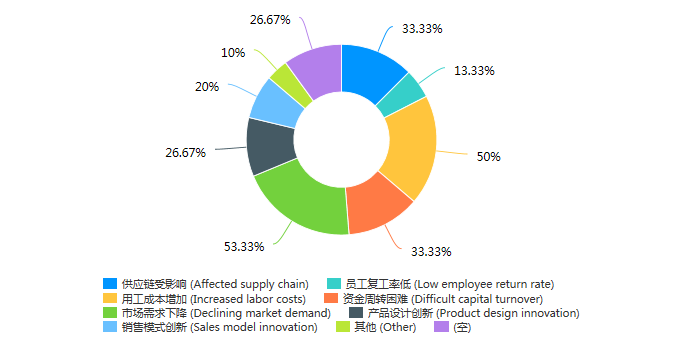
Q: Enterprise's predict on the order volume in the first quarter of 2020 compared with the same period of the previous year

Q: Enterprise's predict on operating income in 2020 compared to the previous year
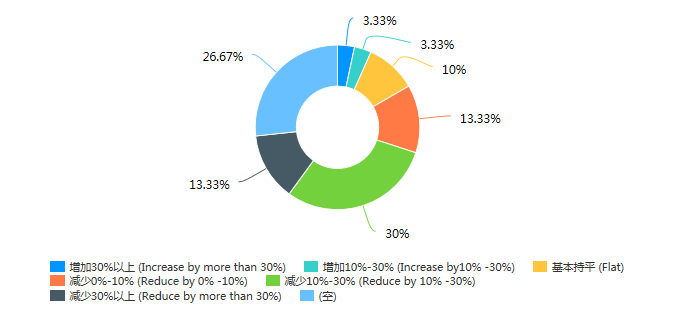
Conclusion
1. The government and industry organizations are responsible, a number of policies and measures have helped companies respond to the crisis.
Facing the sudden epidemic, in addition to tax reduction and financial support, the national and local governments have issued a series of assistance policies in social security, water and electricity, rent, and talents. On April 1, the National Cocoon and Silk Coordination Office issued the "Notice on the Further Work of Cocoon and Silk Industry Development" to stabilize cocoon production, focus on poverty alleviation, and encourage "consumption replenishment". Taking Hangzhou as an example, Hangzhou Economy and Information Technology Bureau has launched services such as "helping ten thousands of enterprises and households", "Qingqing Live Room", "double-incubation and double-innovation cloud services", plans to introduce relevant policies to enhance the historical and classic silk industry in Hangzhou. Chinese Peasants and workers' democratic Party Hangzhou Committee, and Hangzhou city people's political consultative conference jointly promoted to build the World Silk Culture Capital in Hangzhou; China Silk Association assisted China National Textile and Apparel Council to carry out the survey of COVID-19 impact on the textile industry, and silk enterprises’ start-up and resumption of production, etc., they also set up the "Industry Struggle Epidemic Topics" on the official We-chat subscription to update the company's dynamics timely; ISU conducted the research of "Impact of COVID-19 on World Silk Industry and Consumer Market Trends" in ten major silk production and consumption countries, and also conducted a survey analysis on China and Italy. During the COVID-19, ISU secretariat also actively assisted Chinese textile enterprises in exporting anti-epidemic materials.
2. Global economic situation is severe, silk production / sales enterprises faced the order and business crisis.
In March 2020, when epidemic situation was effectively controlled in China, the government and enterprises actively promoted the resumption of production under the heavy pressure of epidemic prevention. However, due to the impact of the international situation, orders for foreign sales have decreased significantly, and domestic sales have not yet resumed. According to the survey, the interviewed companies adopted measures such as "Four days work and three days off", "Shift holiday" and "downgrade salary" to deal with the crisis; Many companies said that the existing orders only meet the production by the end of May. Orders exported to Europe, the United States, Japan and South Korea are often delayed or canceled. Foreign trade companies are actively accepting orders from Southeast Asia and Africa, or transferring to domestic sales. Some enterprises with sufficient liquidity still choose to continue production.
3. Raw silk price fell sharply, and the voice of raw silk storage increased.
Since 2020, the price of 3A-grade raw silk has dropped from 380,000 yuan per ton at the beginning of the year to 270,000 yuan per ton, a decrease of nearly 30%. The price of silk continues to fall, fabric manufacturers are facing a shortage of orders, unable to continue production, and the reeling enterprises' inventory increases, which will inevitably affect the upcoming cocoon market. To this end, many companies and organizations have called for the initiation of reserve silk purchases in response to silk price turbulence.
4. Silk companies actively switch production and expand online sales channels.
Like the international situation, Chinese silk consumer market continues to be sluggish. In response to the epidemic, some silk companies actively invested in research and development, developed silk products with medical protection and health functions, relied on the internet to expand sales channels and promote sales through live broadcast and all-person sales, and achieved good results; Some enterprises actively switched to the production of anti-epidemic materials and introduced production lines of mask and protective clothing to hedge the negative impact of their main business. The conversion has achieved significant results. But at this stage, they are mainly faced with the problems of fierce market competition, reduced product profits and lack of export qualifications.
5. Experts call on the industry to build confidence and work together to fight the epidemic.
The global epidemic crisis didn’t saw the turning point and the supply chain was interrupted, which seriously affected the sustainable development of silk industry. China, as the world's factory and international manufacturing base, with the epidemic improved, industry experts call for the Chinese silk industry to establish strong confidence, find opportunities in challenges, innovate traditional models, standardize operation and management, expand sales channels, and enhance brand concept to enhance the rapid response mechanism of the market. Facing the uncertainty of the current market, the industry should unite and fight against the epidemic, and stabilize the production and trade of the silk industry.

